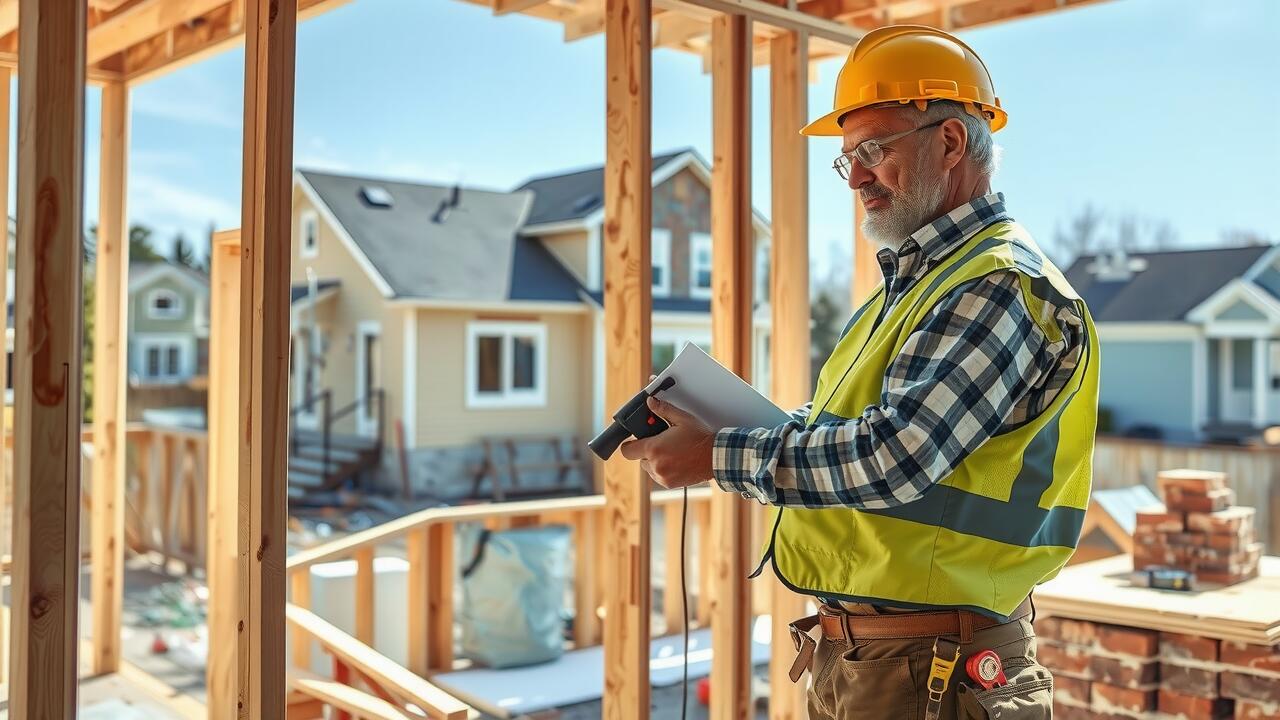
Table Of Contents
Design Review Process
The design review process is a crucial step for homeowners planning room additions in Elayon, Santa Clarita. This process ensures that new constructions meet local zoning codes and maintain the aesthetic integrity of the neighborhood. Homeowners typically need to submit their design plans to the local planning department or architectural review board. This submission may require detailed drawings, descriptions of materials, and specifications regarding the design’s compliance with established neighborhood guidelines.
Once the plans are submitted, they undergo a thorough evaluation by designated officials who assess aspects such as size, height, and overall design compatibility. Homeowners might also receive feedback or requests for modifications to address any concerns raised during the review. Completing this process is essential before starting any construction, as it helps guarantee that the proposed room additions fit seamlessly into the existing community structure and comply with Santa Clarita’s regulations.
Steps for Submitting Design Plans
Submitting design plans for room additions in Waltz, Santa Clarita, involves a precise process that homeowners must follow. First, you need to gather all required documents, which typically include architectural drawings, site plans, and any additional specifications that demonstrate compliance with local zoning laws. These documents should reflect the proposed changes accurately. Make sure to check with the local planning department to understand any specific requirements or formats that must be adhered to during submission.
Once your design plans are ready, submit them to the appropriate municipal department for review. This submission may also require paying a fee, depending on the size and scale of the proposed room addition. After submission, expect a waiting period during which city officials will evaluate the plans for compliance with regulations. Homeowners may be required to make adjustments based on feedback. Understanding this structured process is crucial for the success of room additions in Waltz, Santa Clarita.
Homeowners Association (HOA) Guidelines
Homeowners associations (HOAs) in Santa Clarita often have specific guidelines that govern property modifications, including room additions. Before starting any project, homeowners should review these regulations to ensure compliance. These rules may cover aspects such as aesthetic considerations, material usage, and the overall impact of the addition on the neighborhood’s harmony. Understanding these guidelines early in the planning phase can prevent potential setbacks.
For residents considering room additions in Elayon, Santa Clarita, consulting with the HOA is a fundamental step. Engaging with the association can provide clarity on necessary approvals and the submission of design plans. Some HOAs may even offer resources or advice to help streamline the process. Adhering to these guidelines not only facilitates a smoother construction journey but also helps in maintaining positive relationships with the community.
Navigating HOA Regulations
Understanding the guidelines set forth by your Homeowners Association (HOA) is crucial before commencing any room additions in Plum Canyon, Santa Clarita. Each HOA has its own set of rules that dictate what modifications are permissible. These may include restrictions on size, architectural design, materials, and placement of the addition. Often, associations require homeowners to submit detailed plans for approval before any physical work begins. Familiarizing yourself with these regulations can save time and ensure a smoother process.
In addition to physical parameters, the HOA may also have stipulations regarding aesthetics that align with community standards. Compliance with these guidelines not only helps maintain property values but fosters a sense of unity within the neighborhood. Before you start your project, consult your HOA’s covenants and restrictions documents. It’s advisable to attend HOA meetings or engage with board members to clarify any uncertainties regarding your room additions in Plum Canyon, Santa Clarita. This proactive approach can significantly enhance your project’s acceptance.
Neighbor Notifications
Before proceeding with room additions in Humphreys, Santa Clarita, homeowners should prioritize notifying their neighbors. This process involves informing adjacent property owners about the intended changes, ensuring transparency and fostering good relationships within the community. Depending on the scope of the project, discussions about potential impacts such as noise, privacy, and visual changes can help address any concerns early in the process.
Effective communication is vital when planning room additions. Neighbors may appreciate being kept in the loop, and this can lead to collaborative solutions if issues arise. Providing clear information about the project’s timeline and scope can alleviate worries and contribute to a more seamless construction experience. Engaging with the community upfront often results in a more positive reception of the project as it progresses.
Importance of Communicating with Adjacent Property Owners
Communicating with adjacent property owners is a crucial step when planning room additions in Saugus, Santa Clarita. Neighbors may have valid concerns regarding changes that could impact their privacy, views, or property value. Ensuring an open line of communication can help address these issues before they escalate into formal disputes. Many residents appreciate being informed about construction plans that might affect their daily lives.
Additionally, proactive communication fosters a sense of community and cooperation. Neighborly discussions not only allow for feedback but also help in gathering support for the project. By informing them early about your intended room additions, you can promote understanding and potentially even collaboration, making the process smoother and more amicable.
FAQS
What permits do I need for a room addition in Santa Clarita?
To begin a room addition project in Santa Clarita, you typically need a building permit from the city. Depending on the scope of your project, you may also need additional permits, such as electrical or plumbing permits.
How does the design review process work for room additions?
The design review process involves submitting your design plans to the local planning department for approval. This ensures that your addition complies with zoning laws and aesthetic standards. It usually includes several steps, such as preparing plans, submitting an application, and potentially attending a review meeting.
What should I consider when navigating HOA regulations for a room addition?
When navigating HOA regulations, check your HOA’s guidelines regarding architectural changes. You may need to submit your plans for approval before proceeding with construction. It’s essential to adhere to any specific design standards or restrictions outlined by your HOA.
Why is it important to notify my neighbors about my room addition?
Notifying your neighbors is crucial as it fosters good relationships and provides them with an opportunity to voice any concerns they may have. Additionally, some local regulations may require you to inform adjacent property owners before commencing construction.
What are the potential consequences of not following legal requirements for room additions?
Failing to comply with legal requirements for room additions can result in fines, stop-work orders, or even the requirement to remove the addition. It is essential to adhere to all regulations to avoid complications and ensure a smooth construction process.

